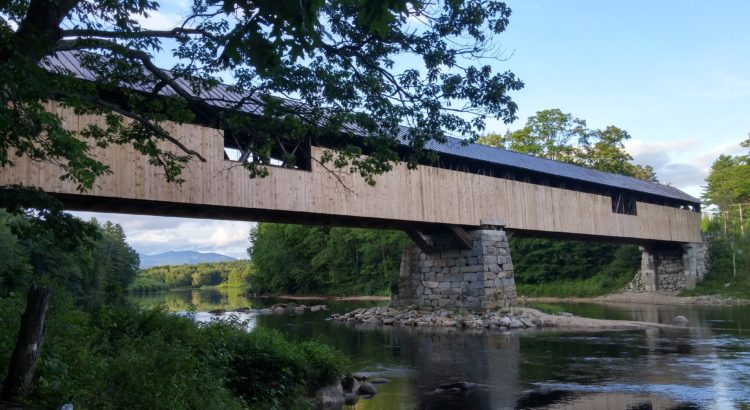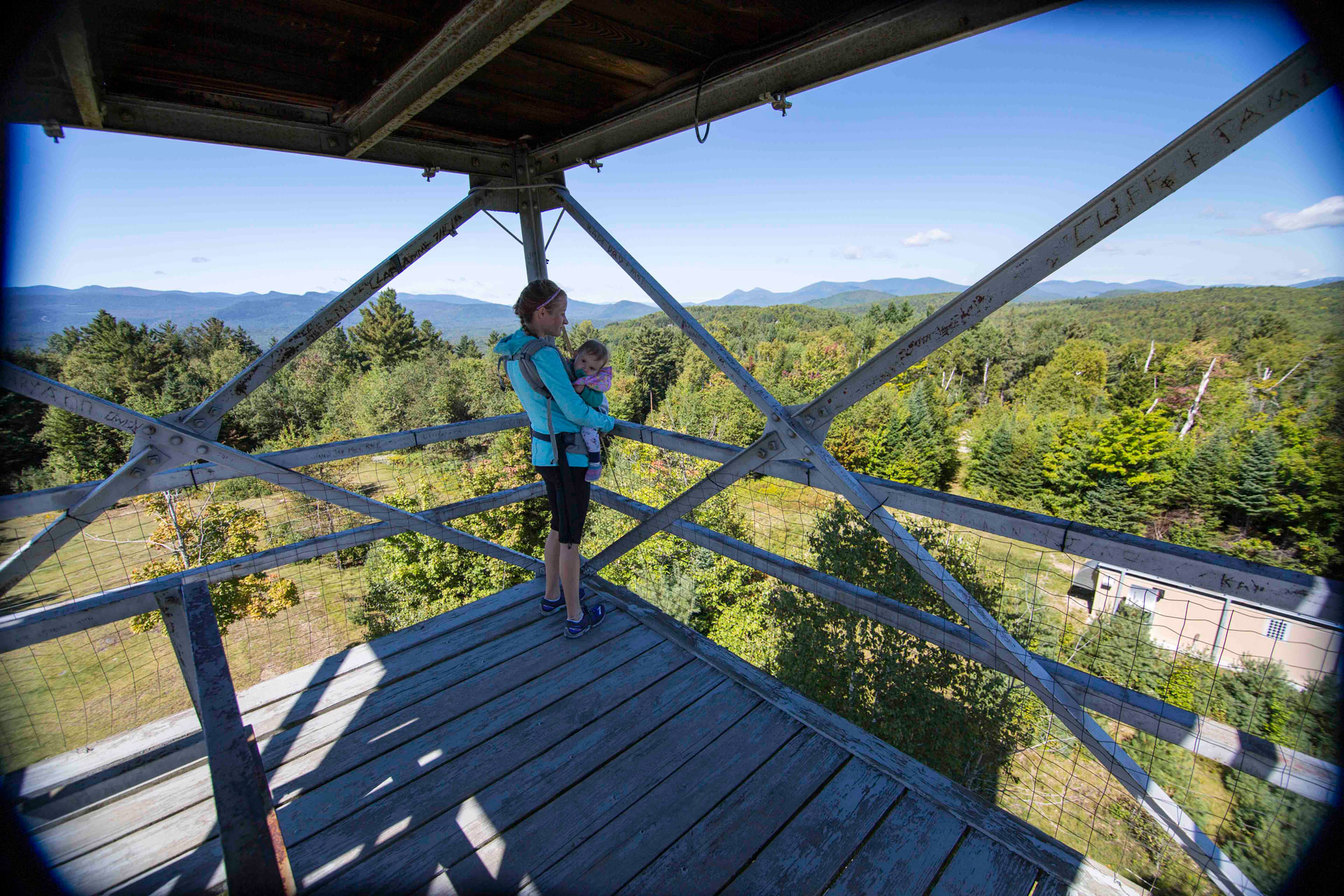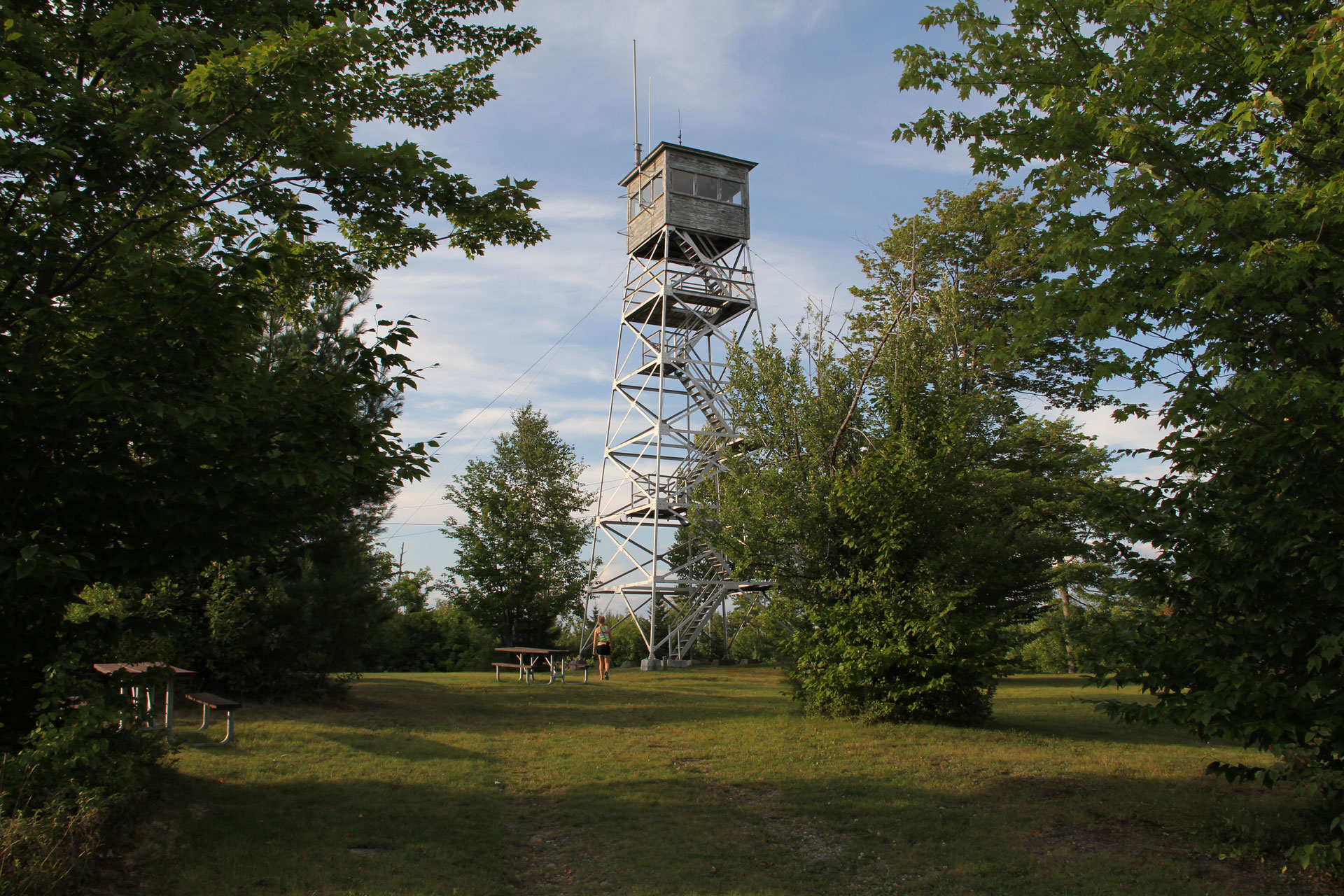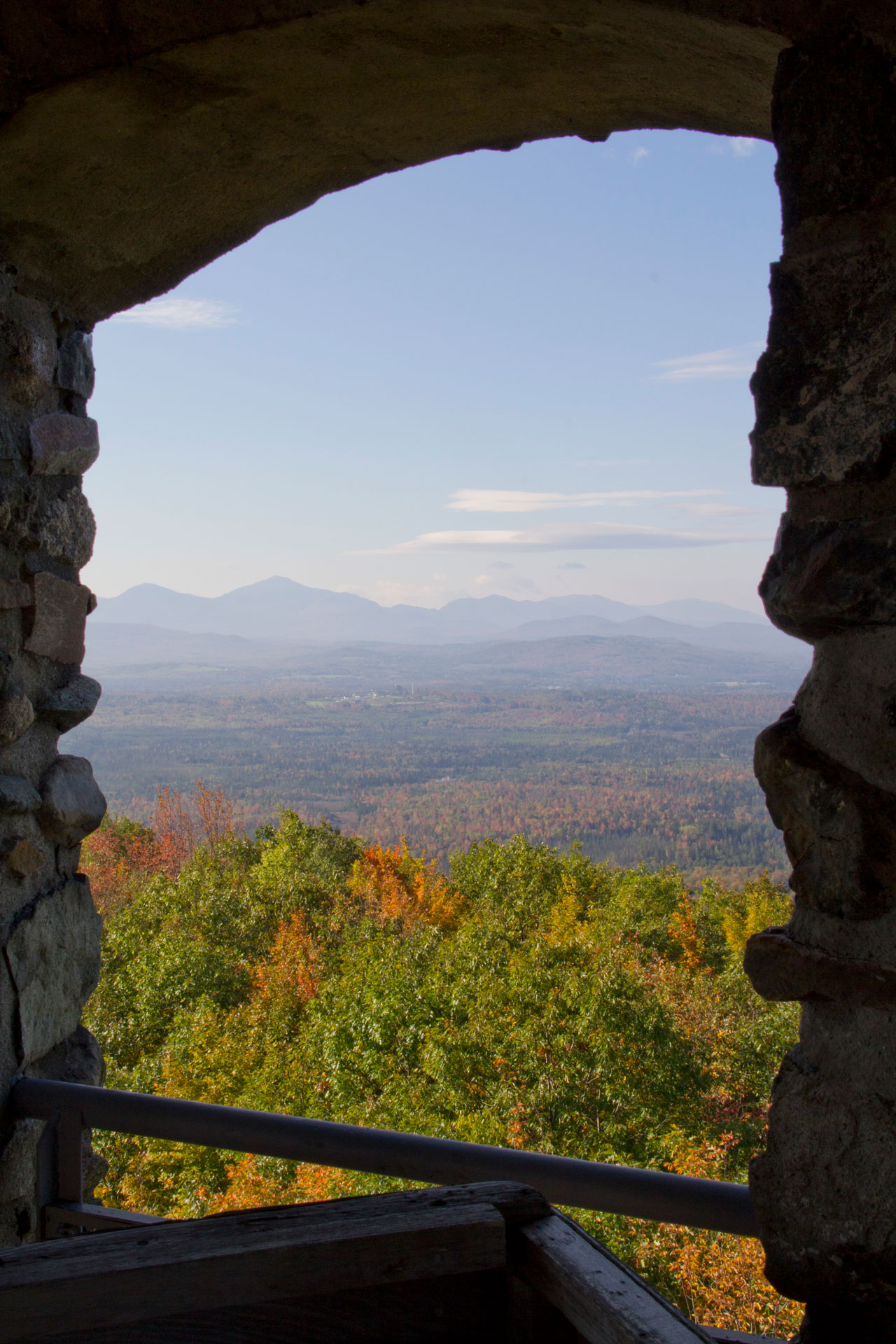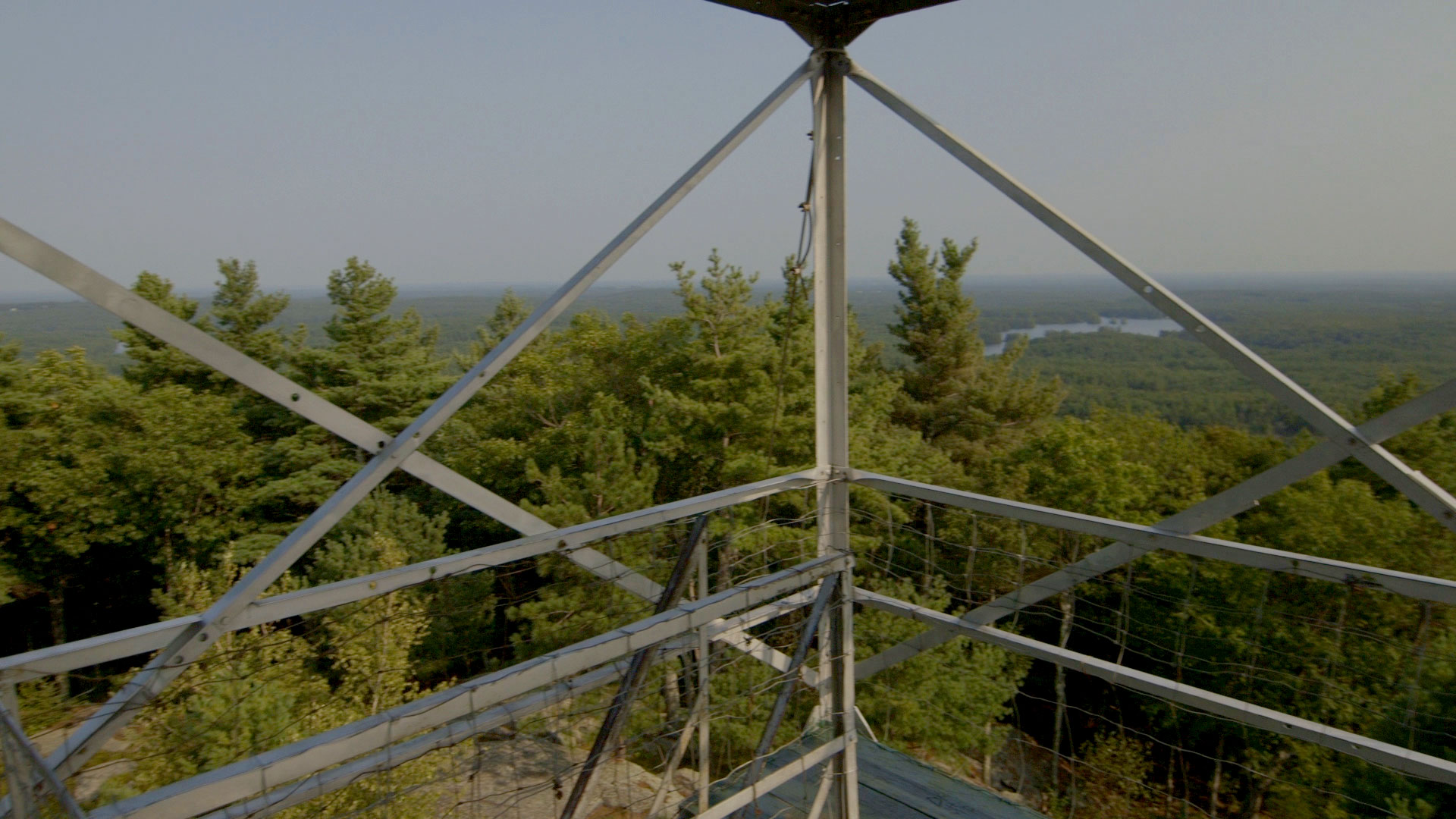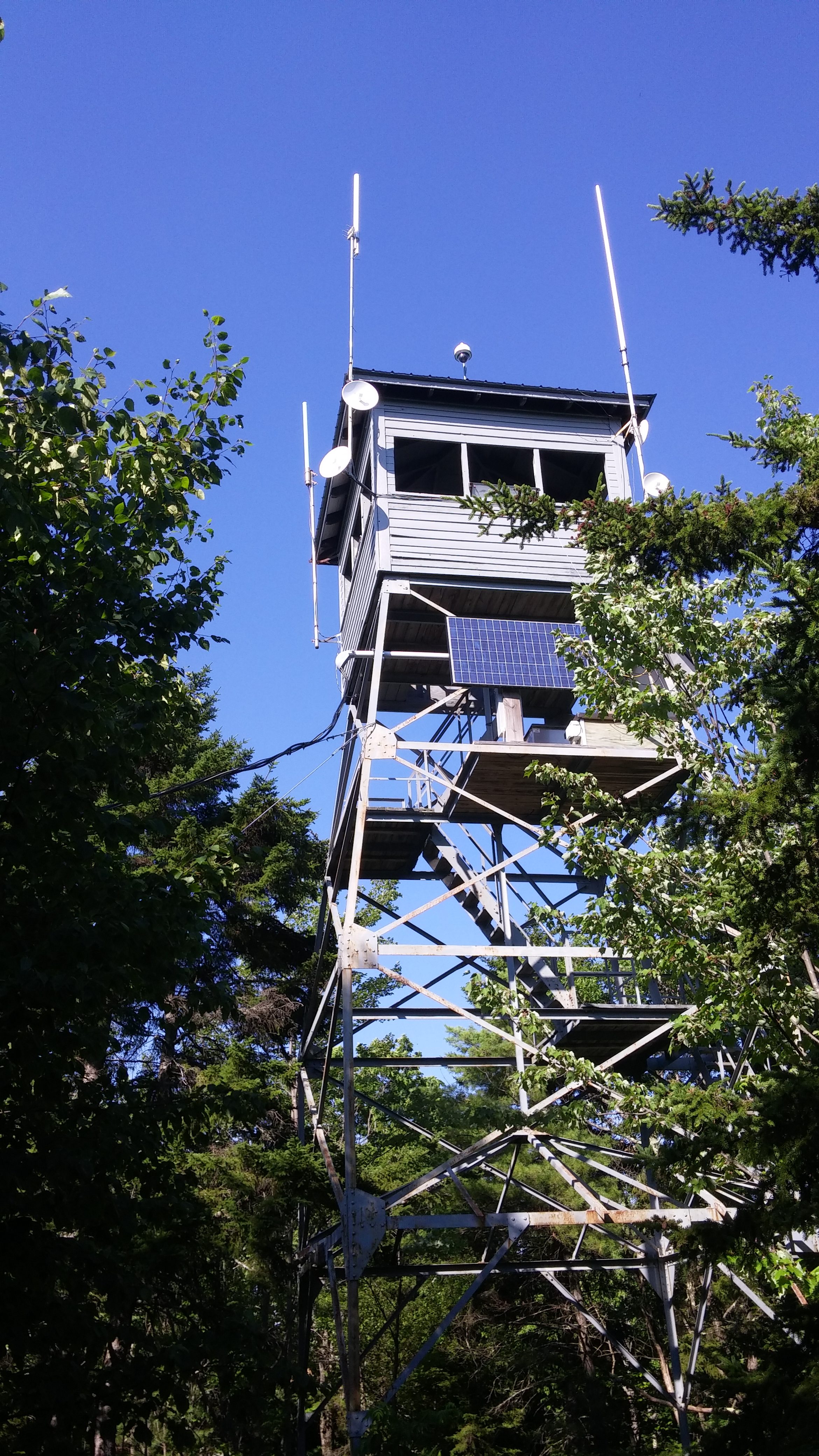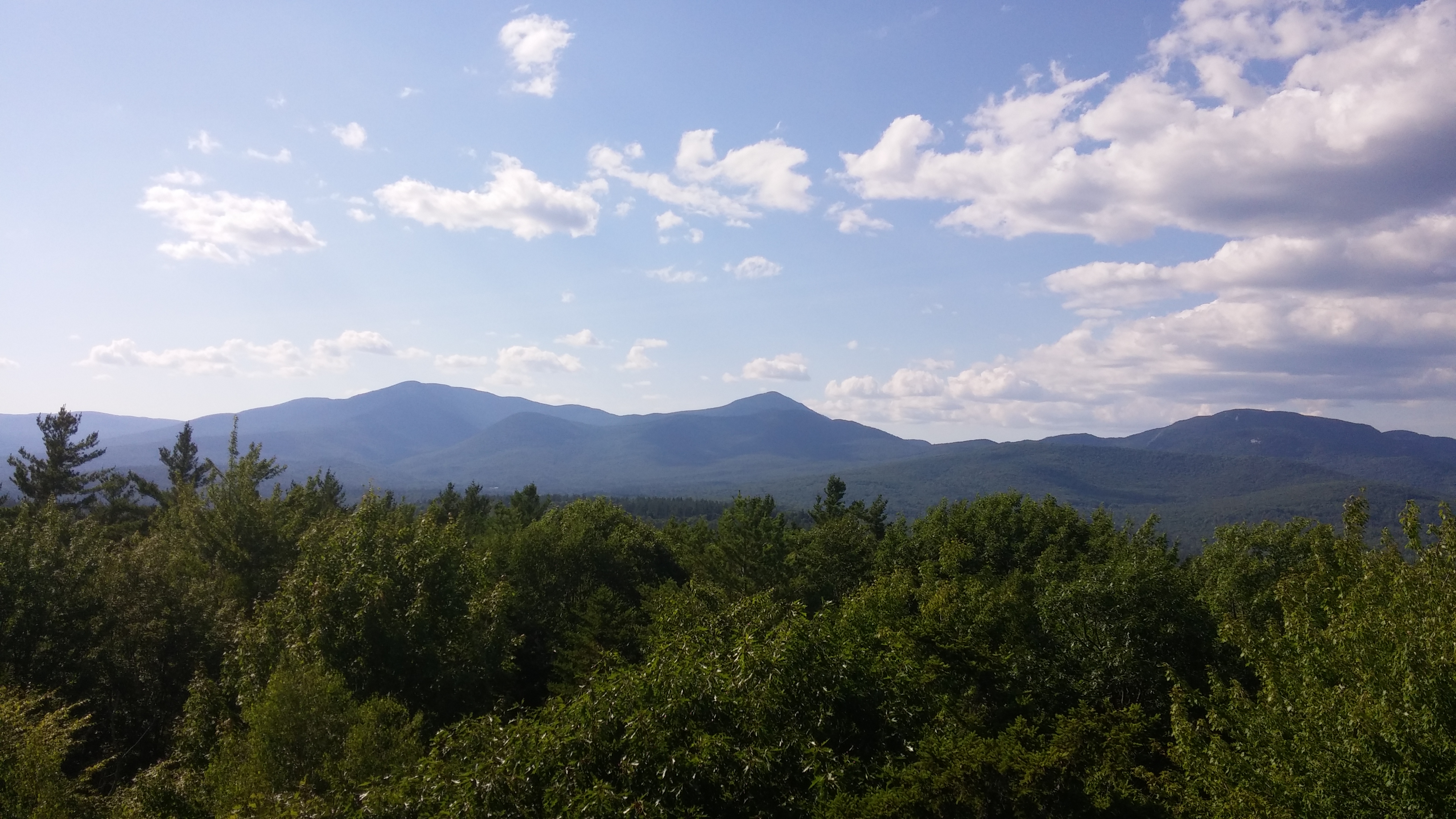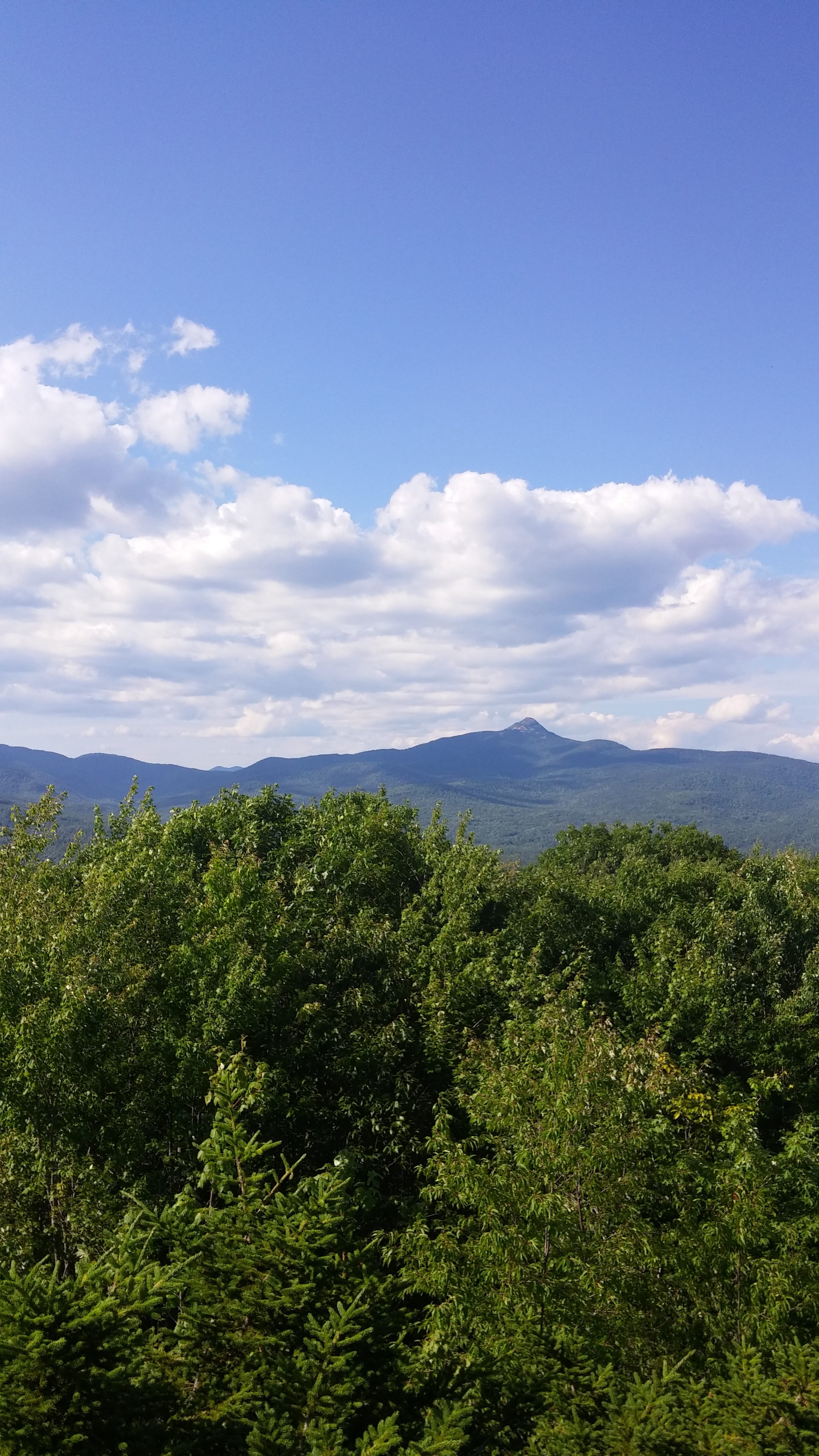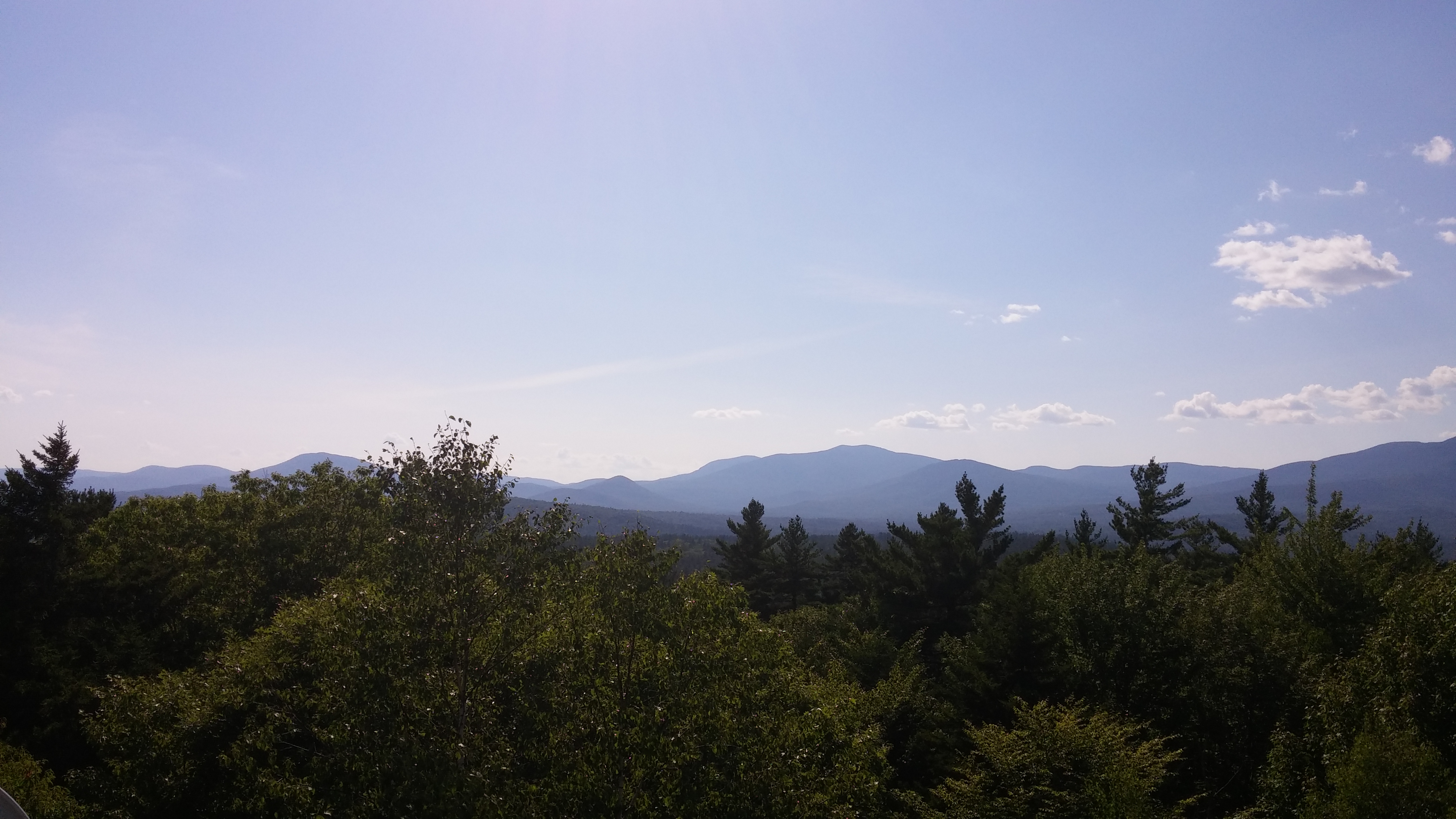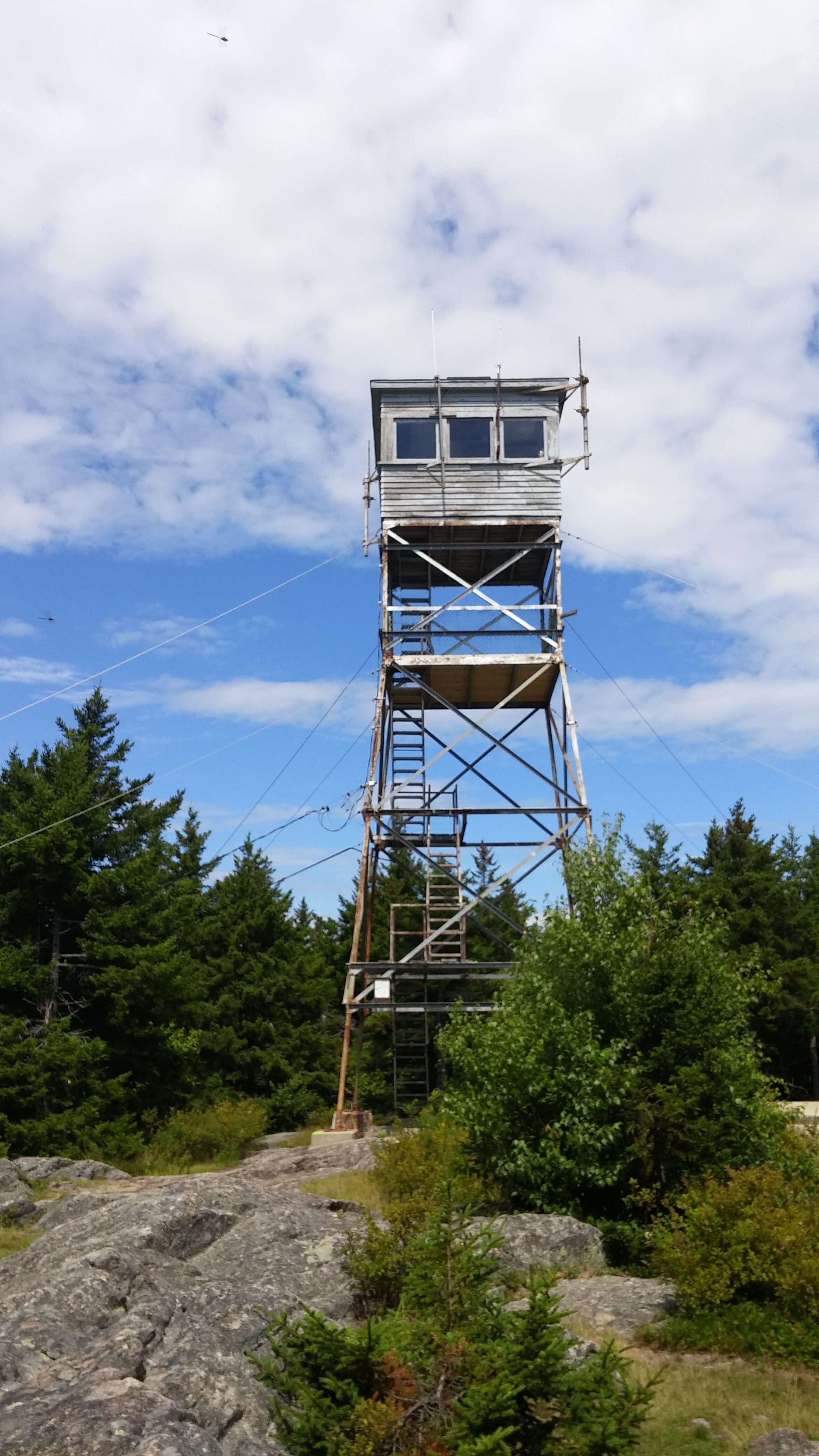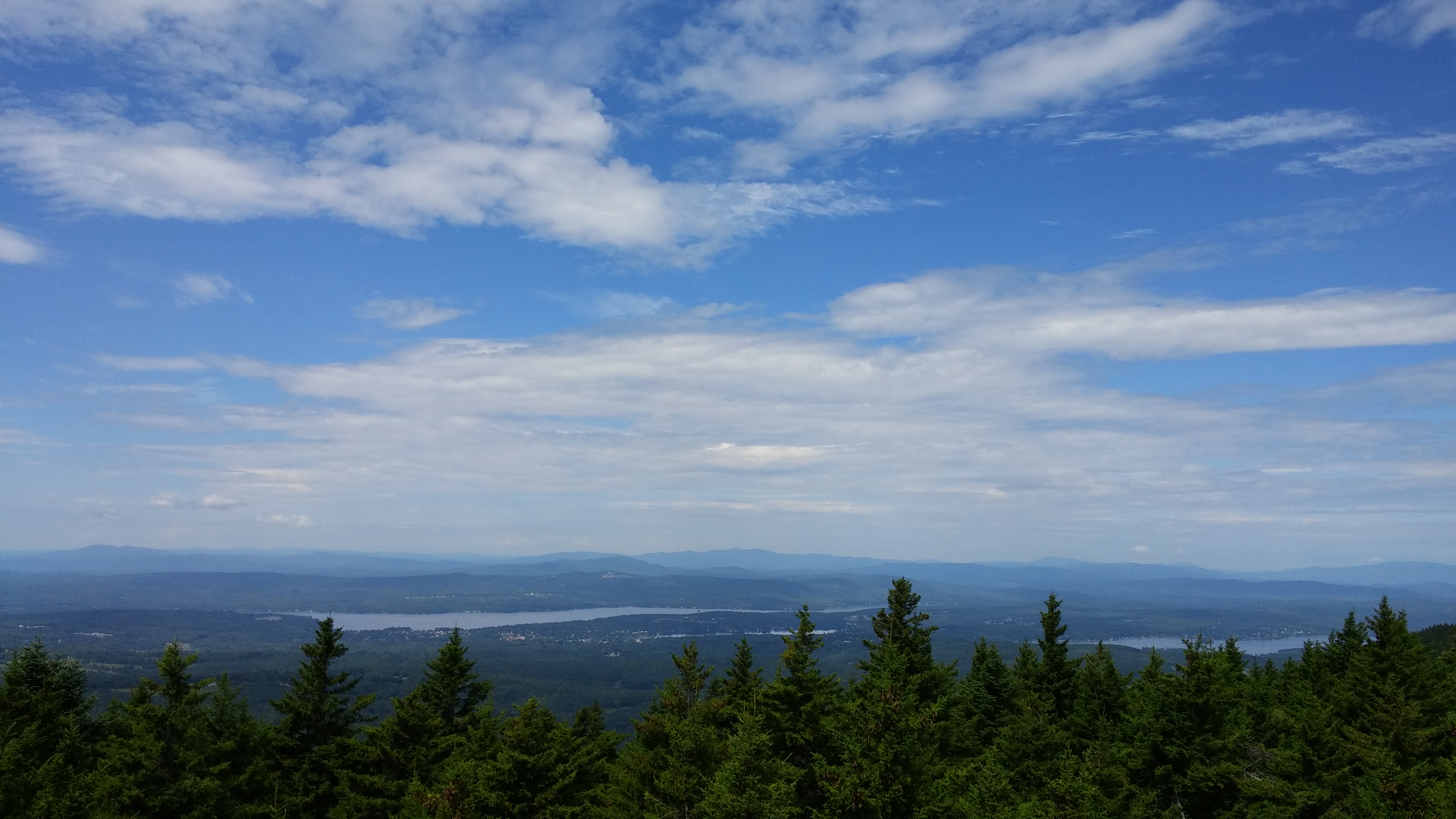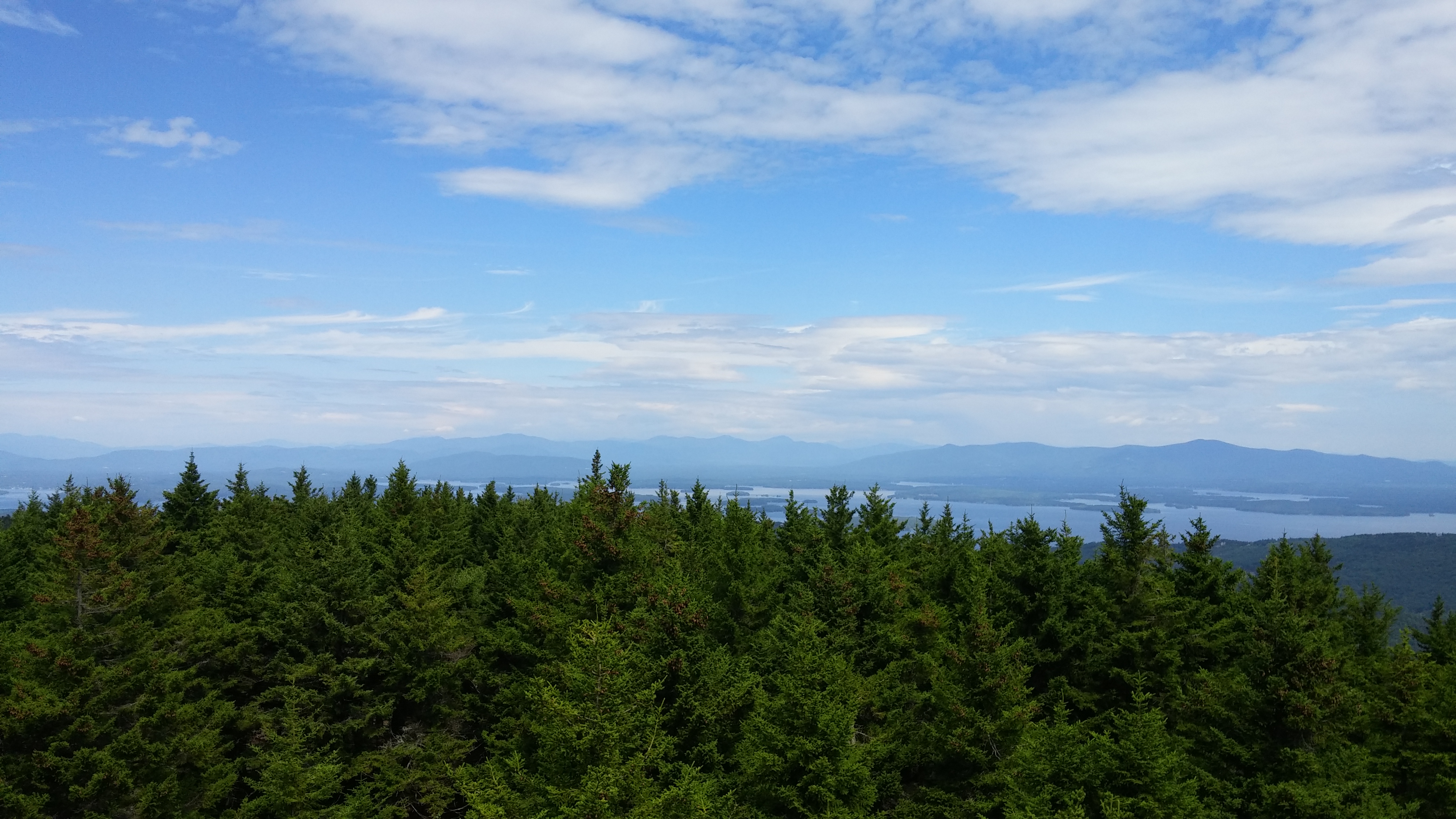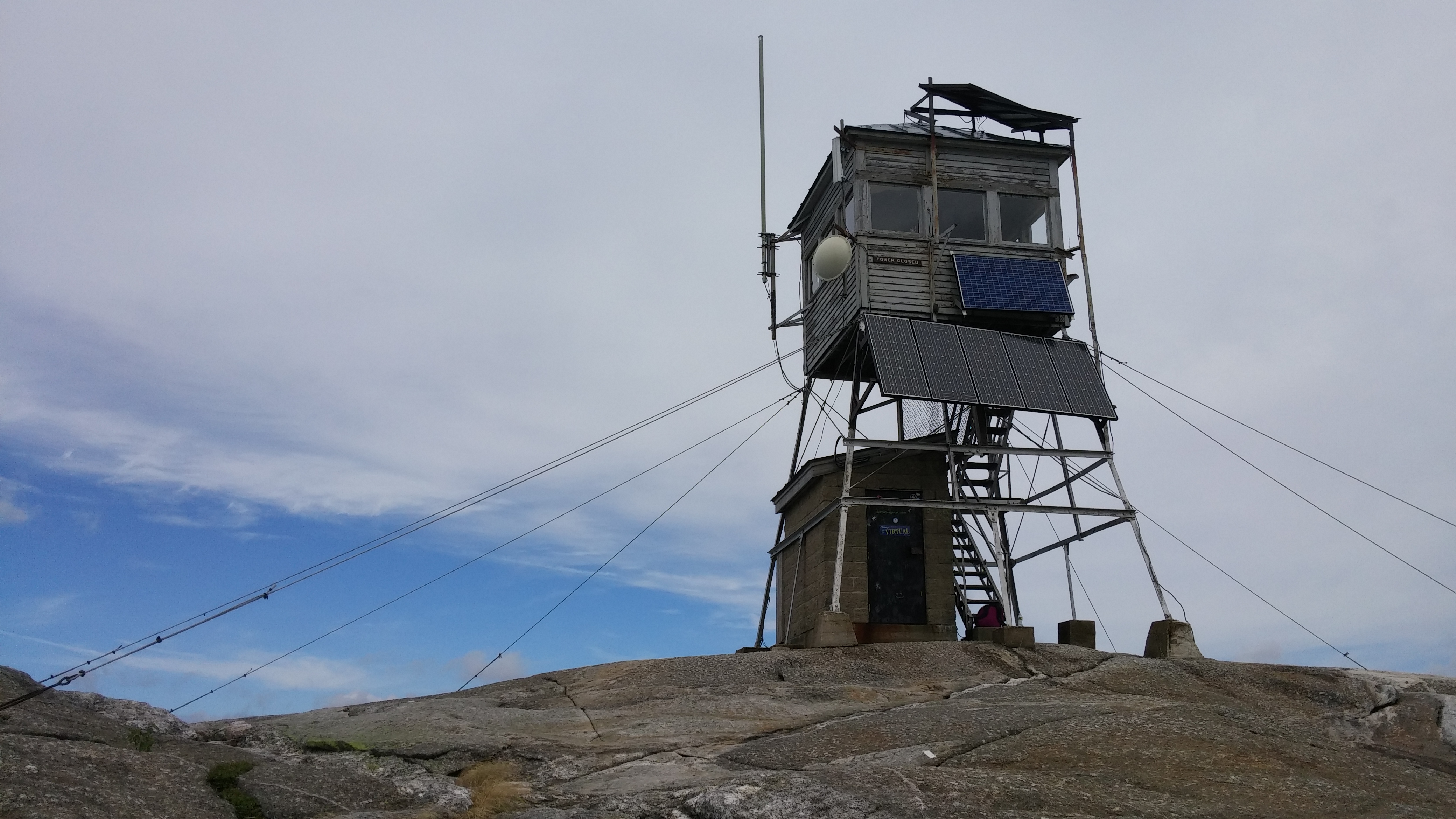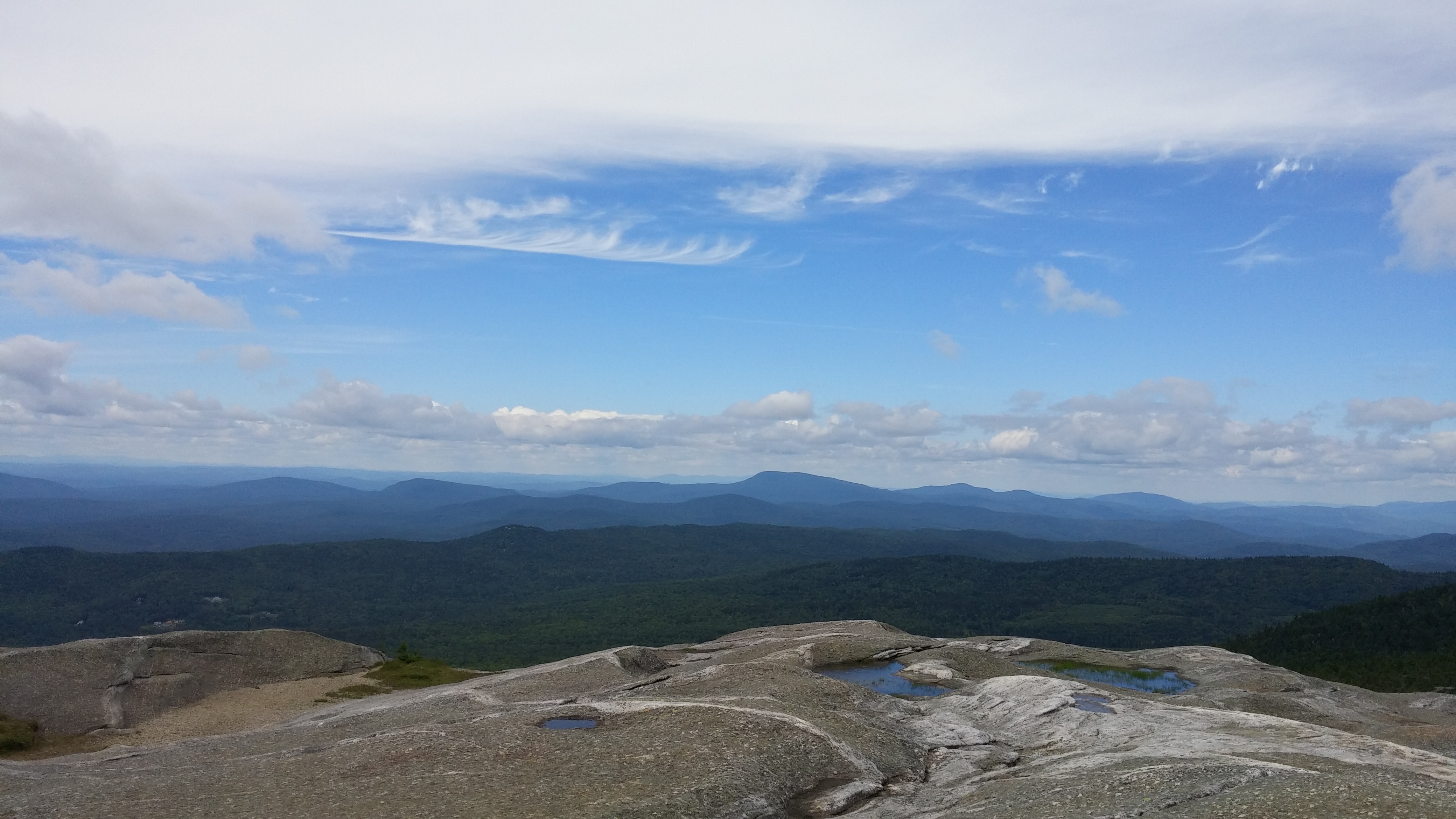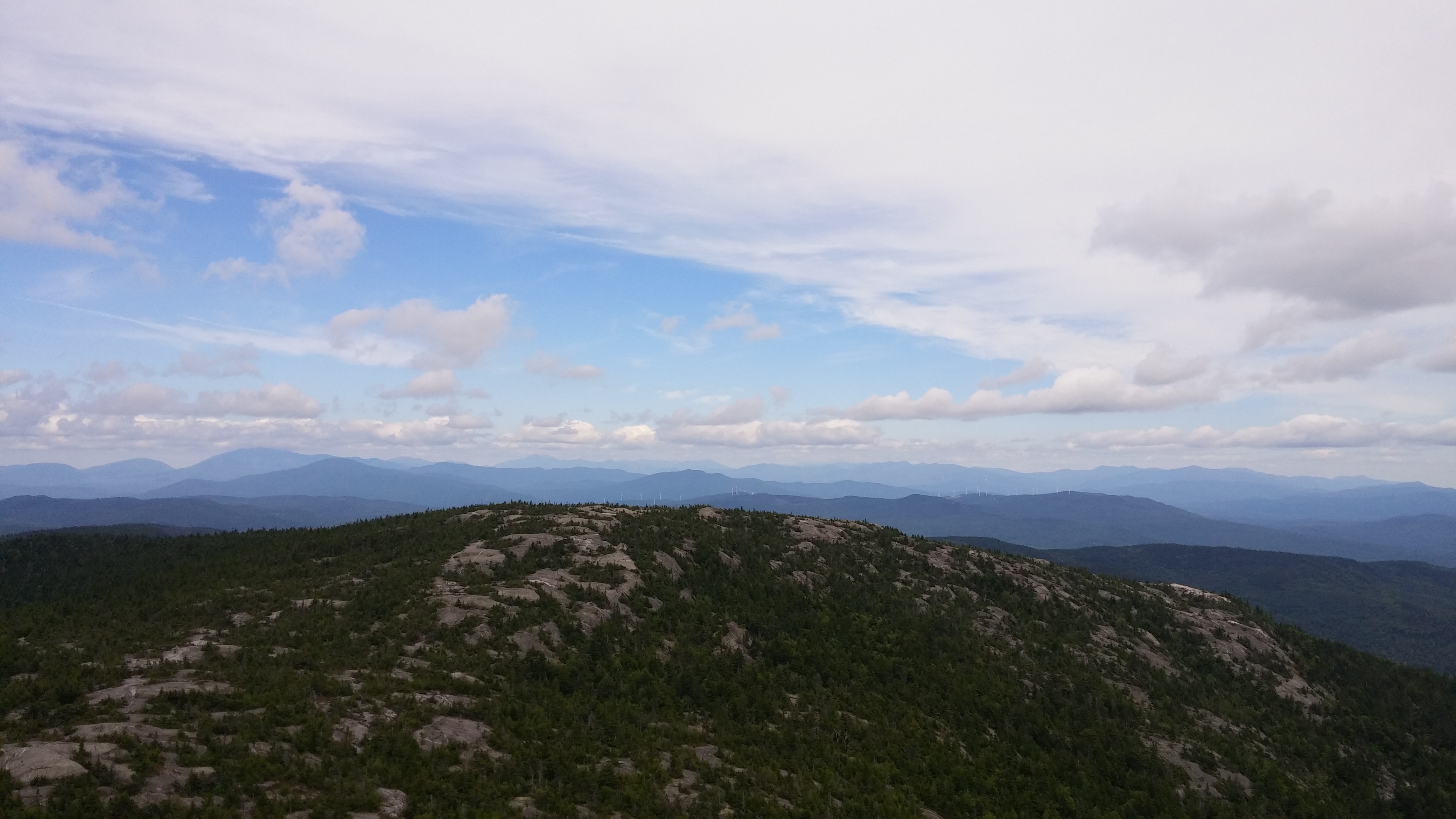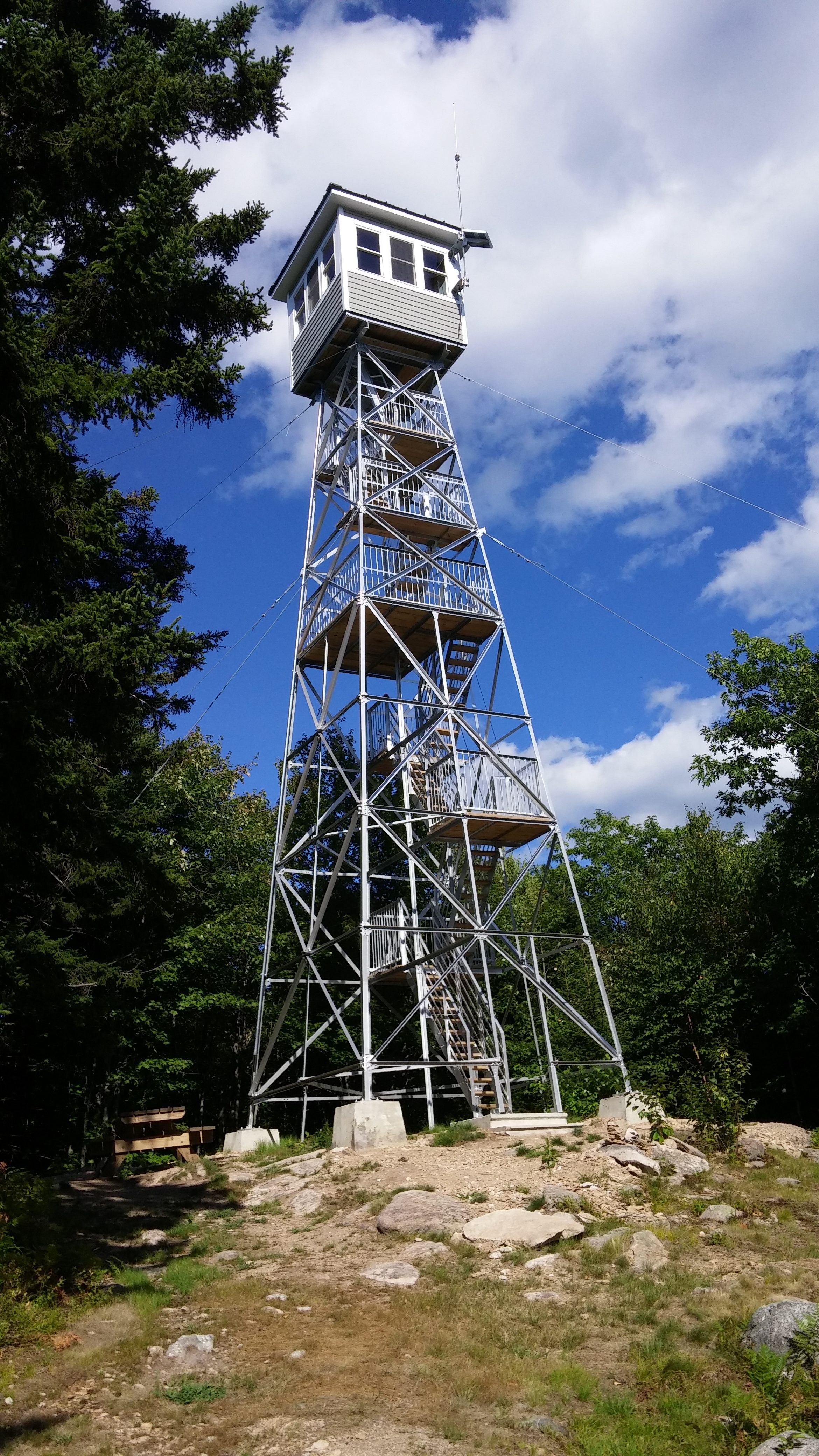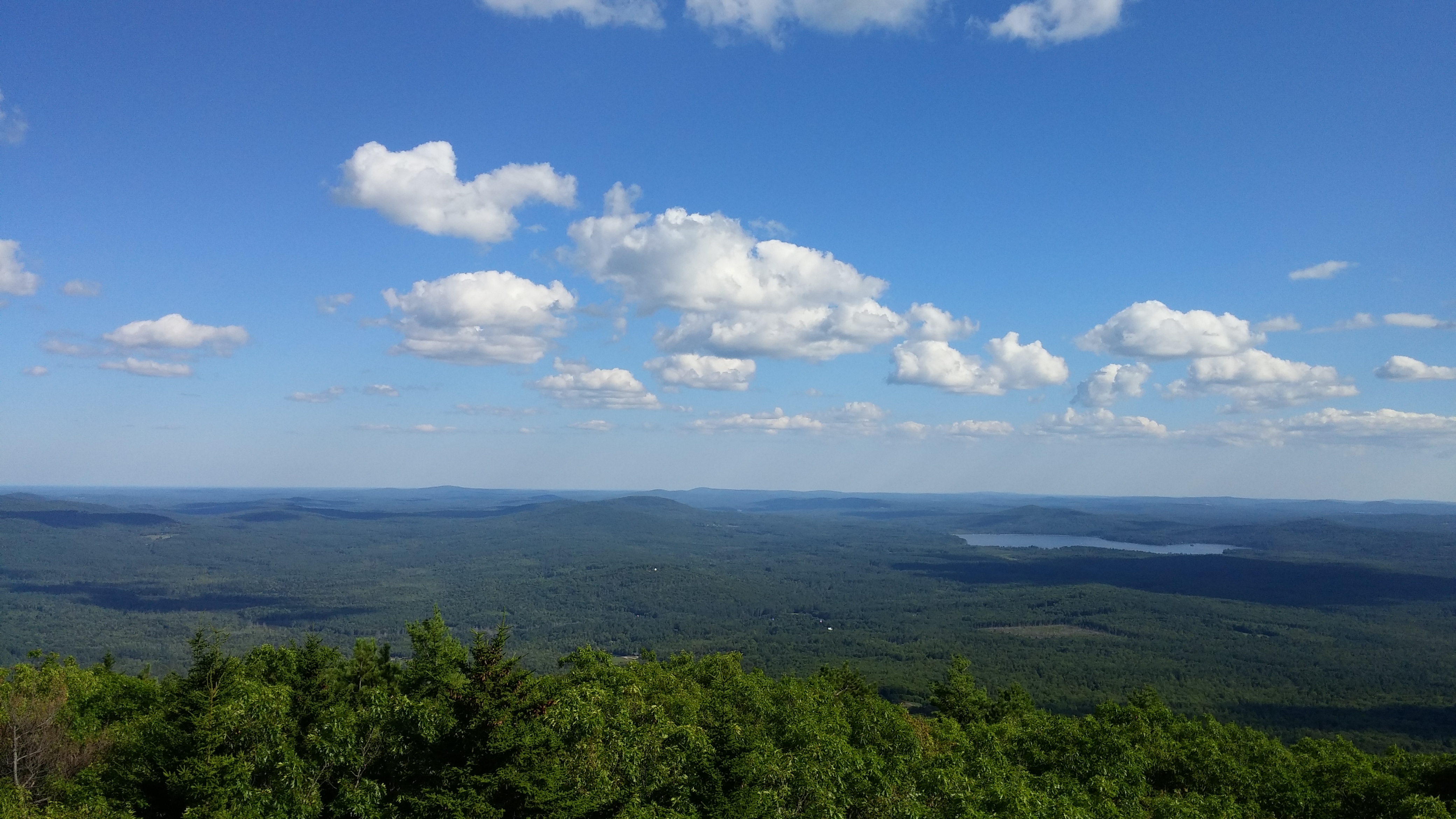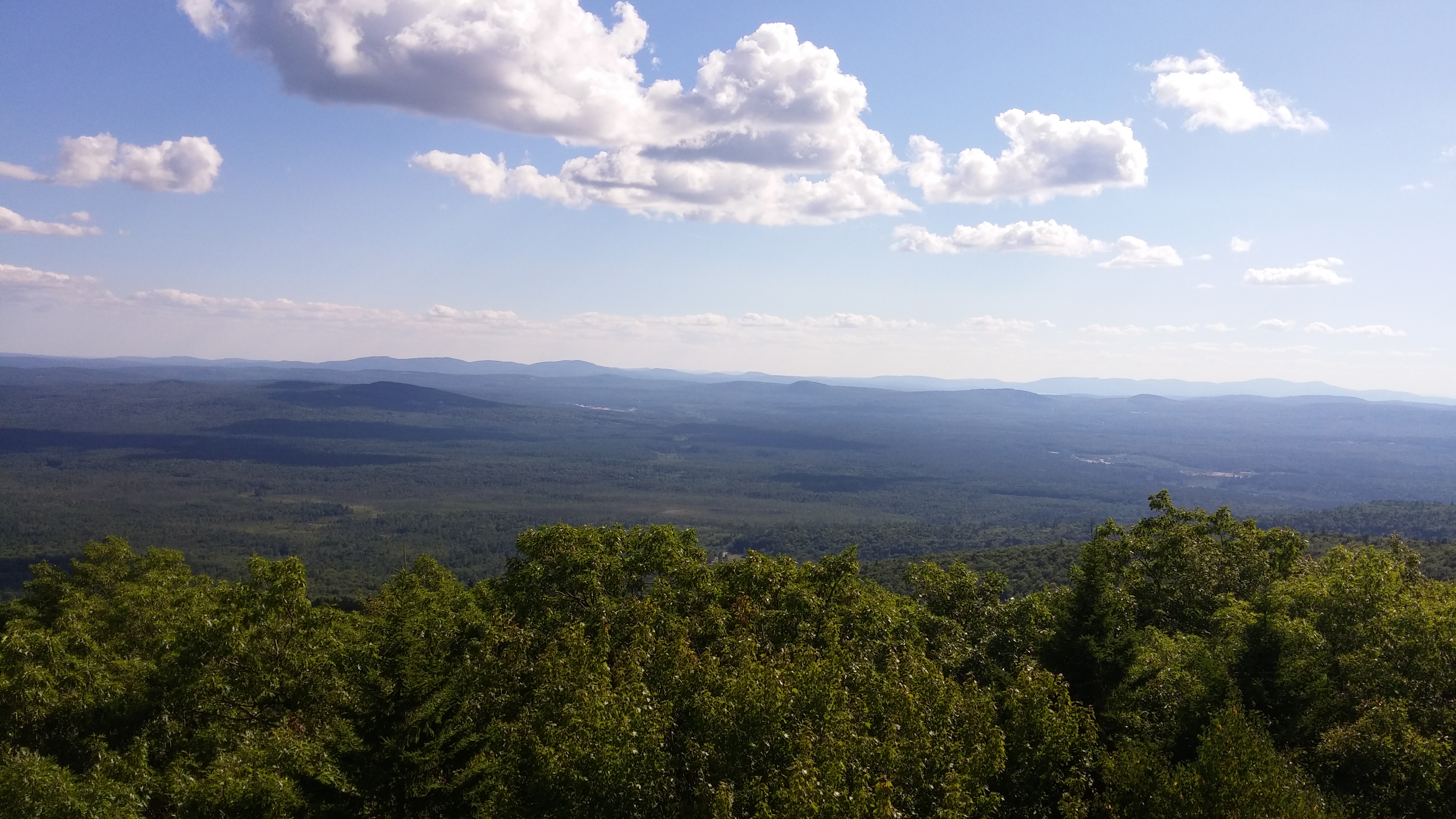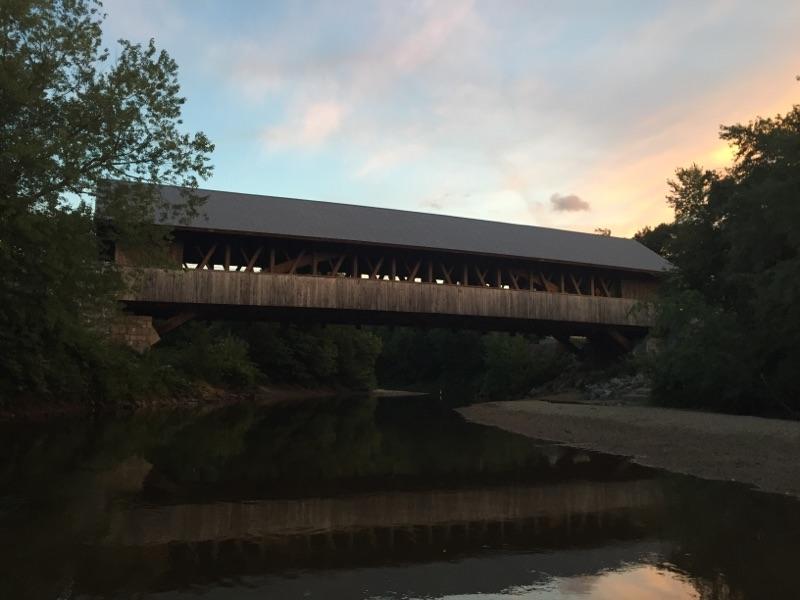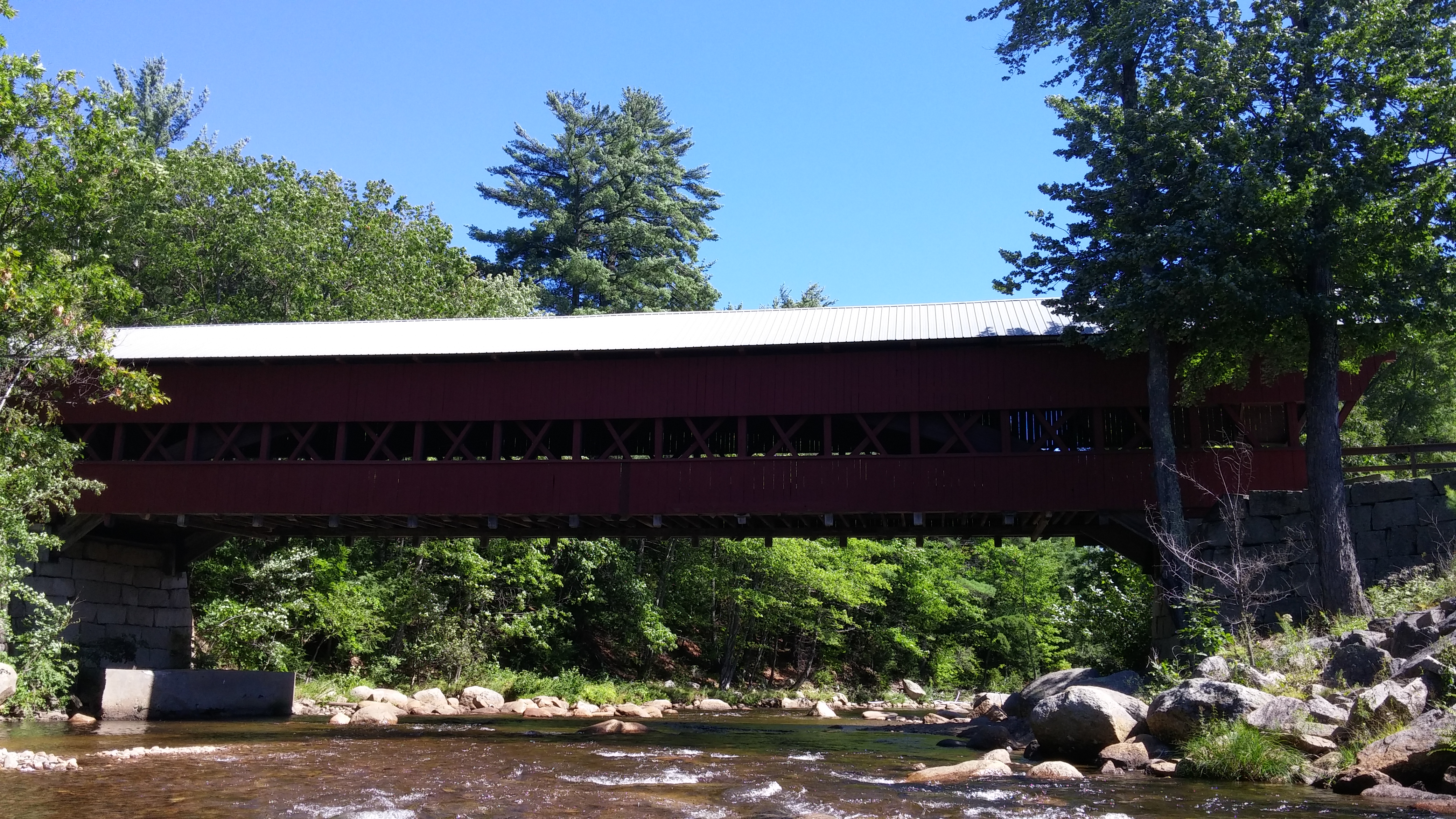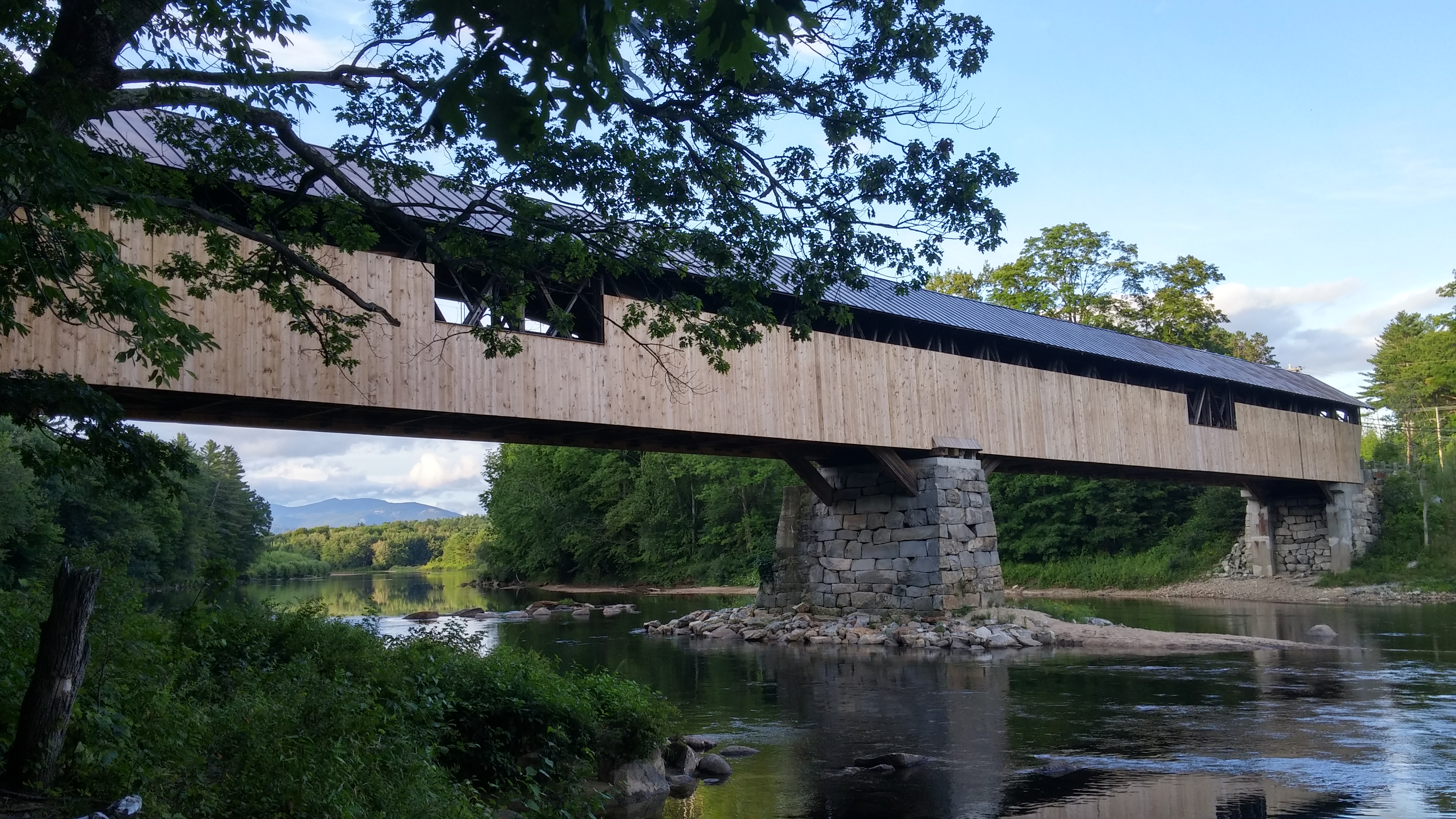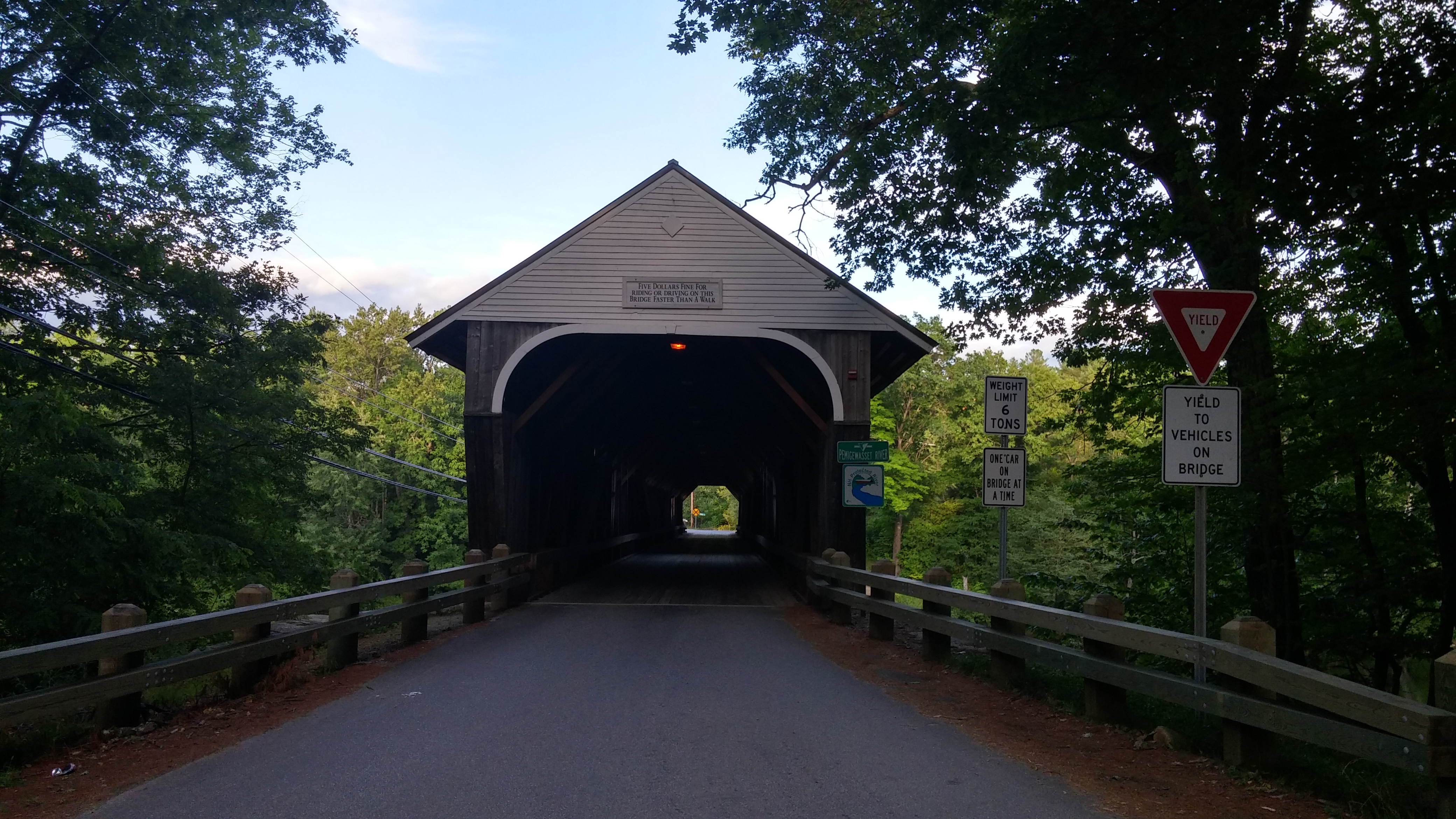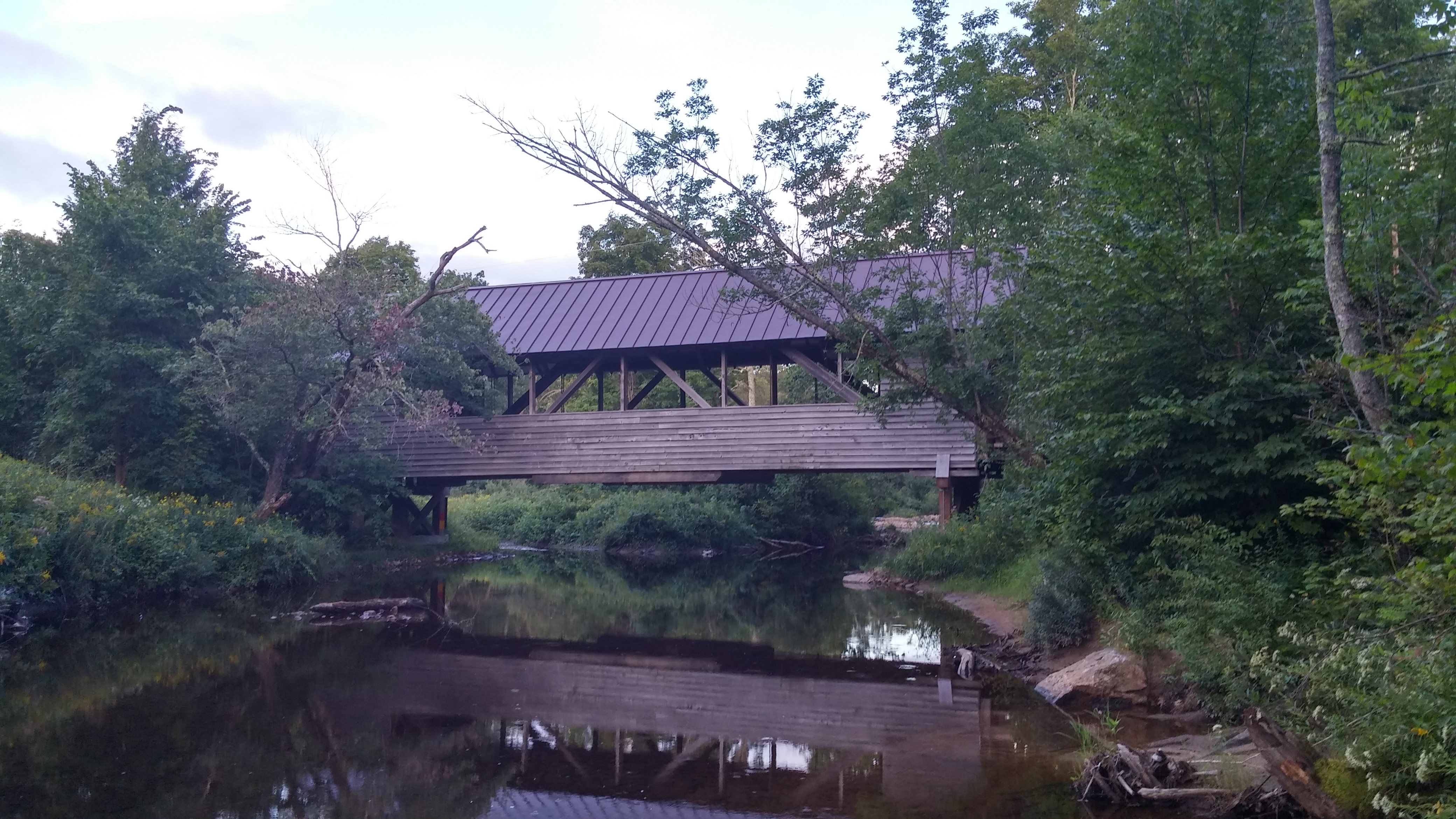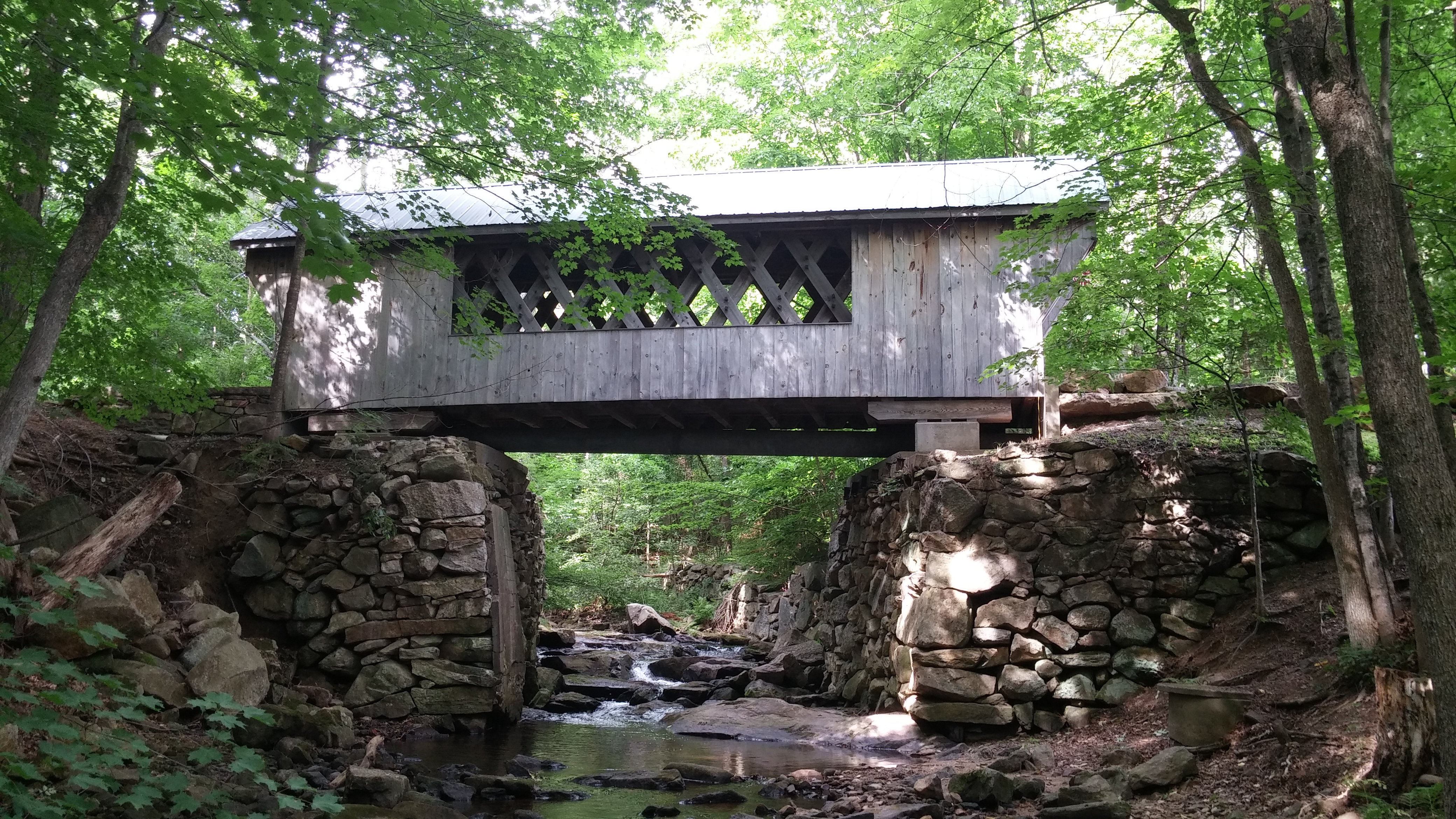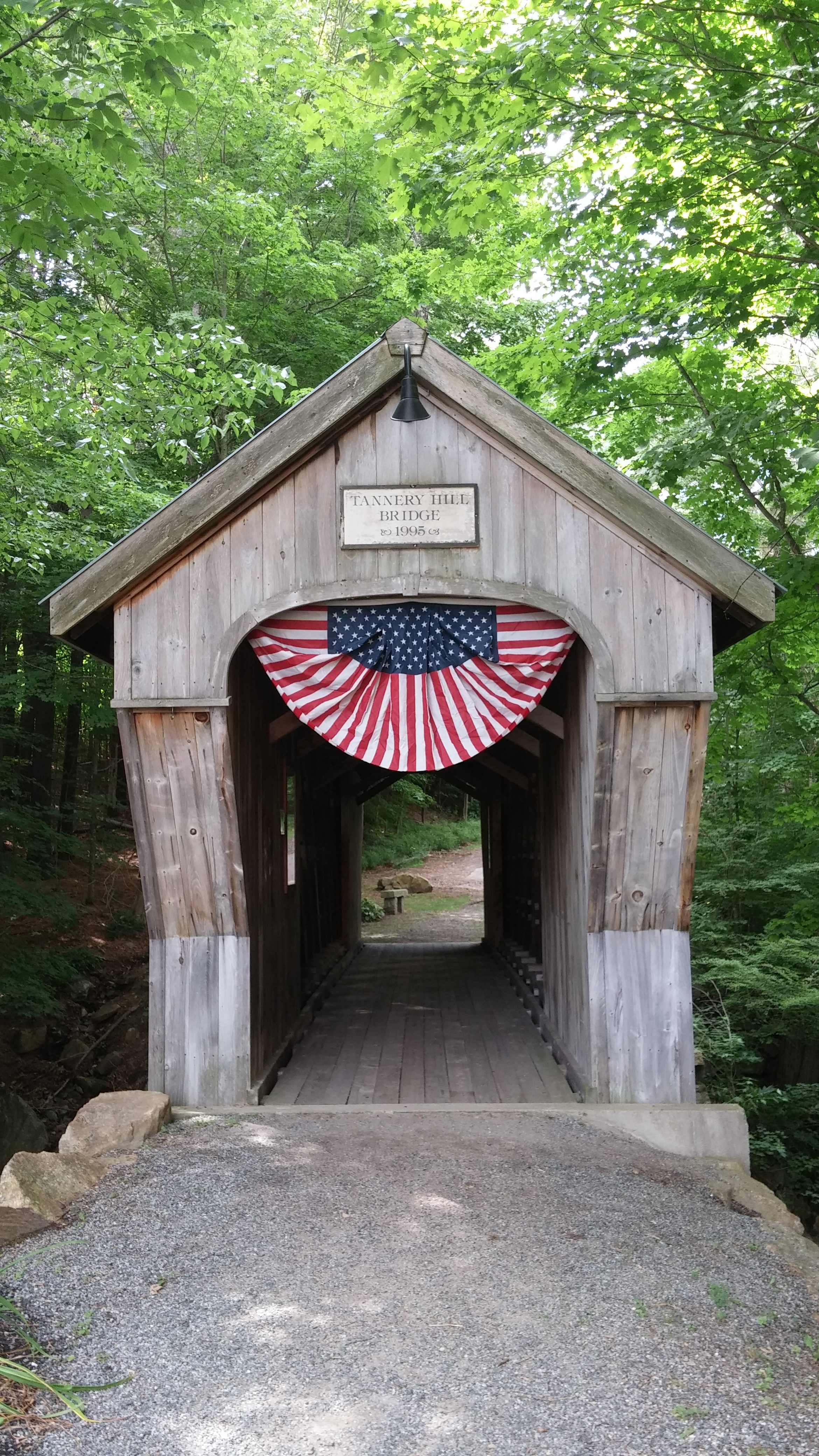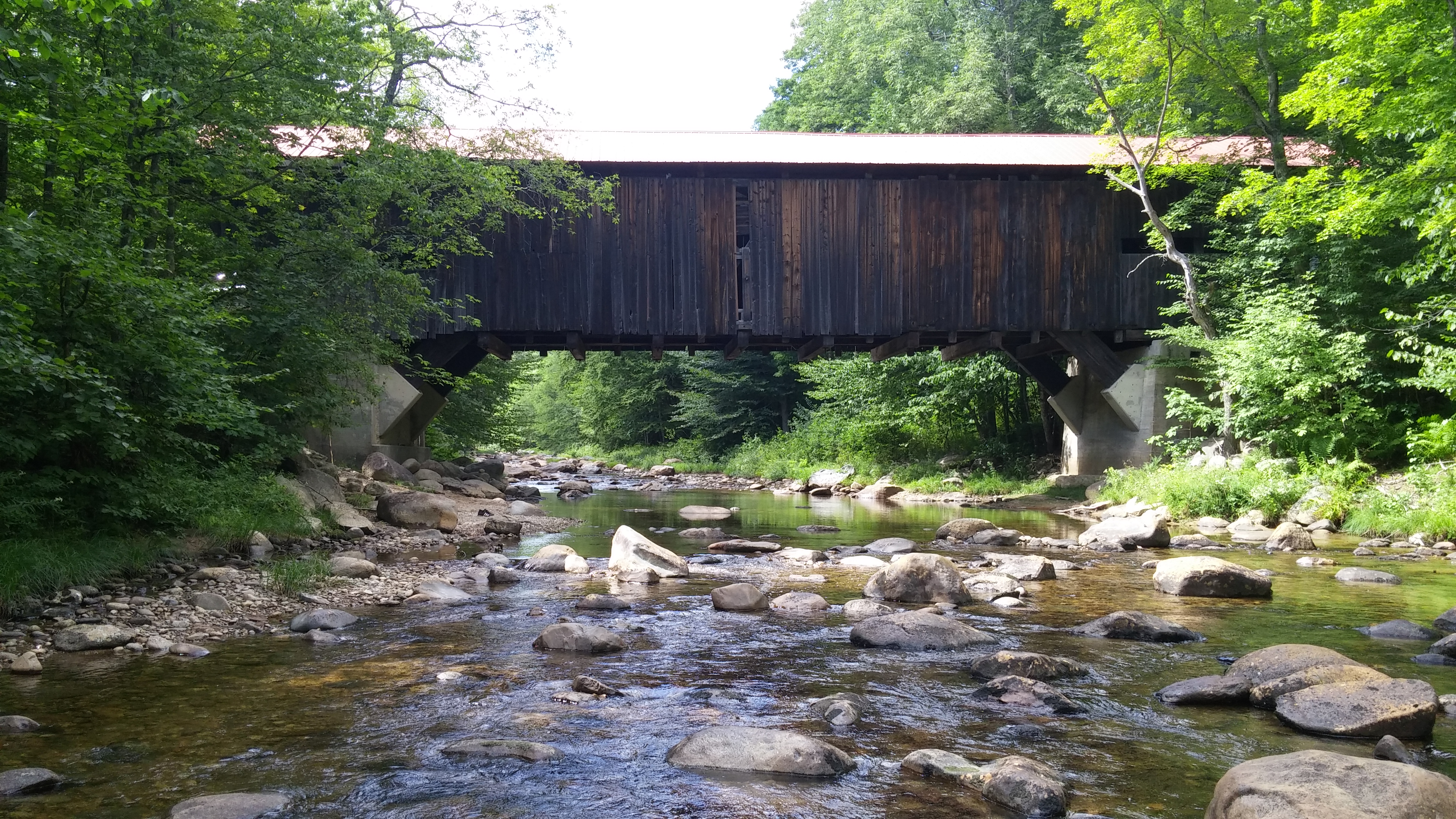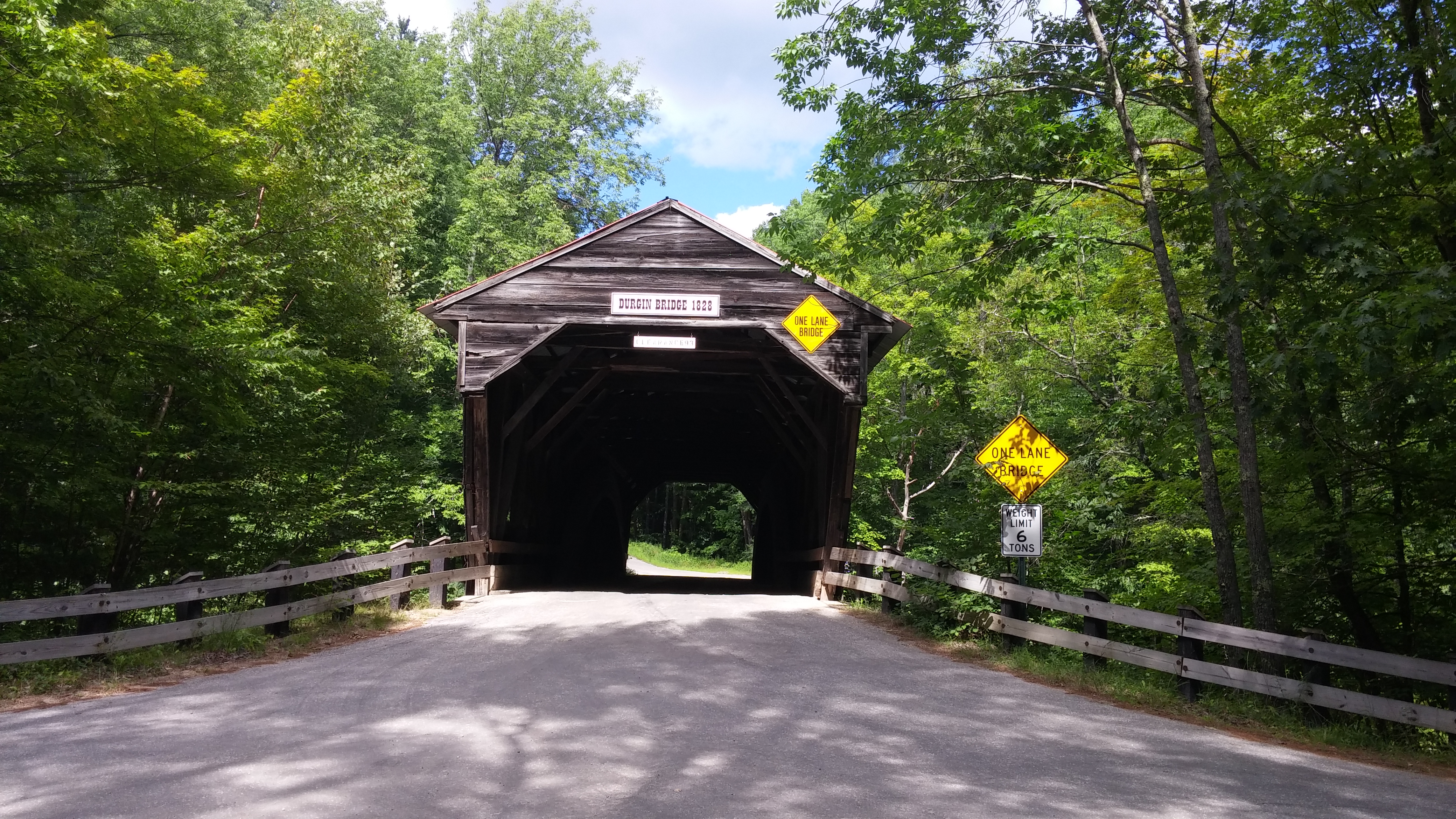New Hampshire’s cultural history has been largely influenced by its natural history. Everything from ancient volcanoes and glaciers to modern day forest fires have helped to mold the mountains, rivers, and lakes that we know and love today. As a result, people have had to continuously adapt to the rough and rugged landscape. This has led to the implementation of two of New Hampshire’s biggest and most loved icons: fire towers and covered bridges.
Fire Towers
Fire lookout towers can be found overlooking the forests on numerous mountaintops throughout the state. At one point, there were over 80 fire towers in New Hampshire, but only 29 still remain and of those 29, only 17 towers are still manned. The remains of some old fire towers can be found on mountain peaks including Mt. Osceola in Waterville Valley.
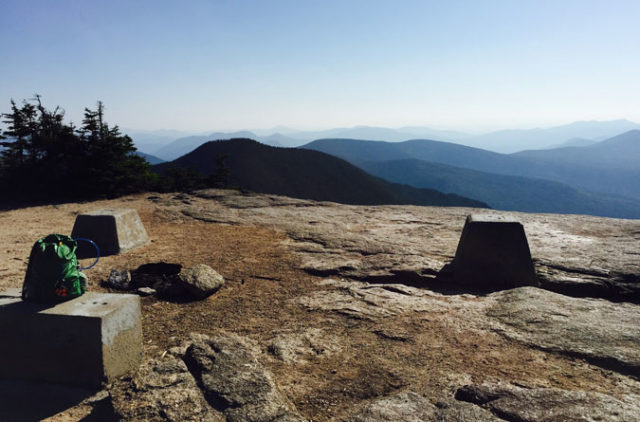
Historically these towers were used to spot and respond to wildfires that were becoming an increasingly large threat between 1888 and 1911 as a result of logging. Evidence suggests that the oldest tower in New Hampshire, Croydon station, was built during this time. The use of aircrafts for fire spotting starting in 1948, however, largely led to the declining use of fire towers.
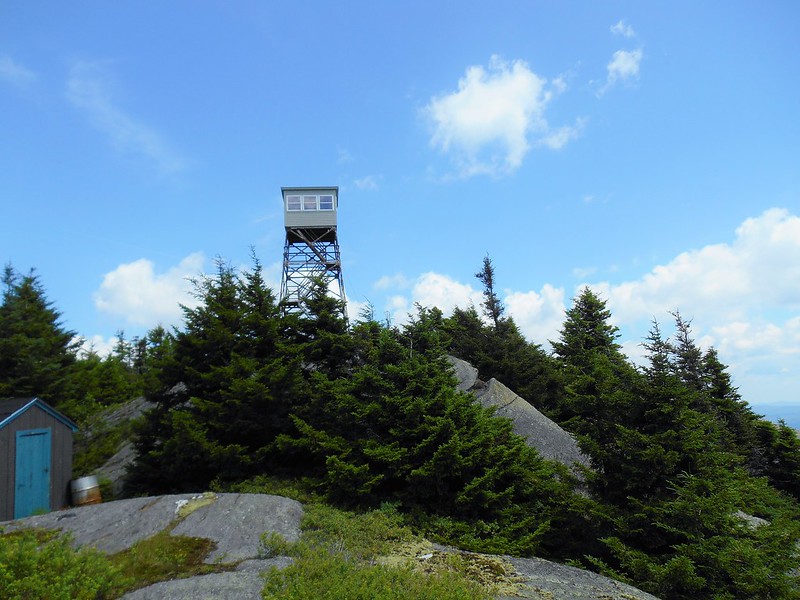
Now many of the towers are used for recreation purposes because of the stunning 360° views that they provide. The towers turn some lower elevation summits like Warner Hill in Derry (605’) popular hiking destinations. There are even a few state parks that include fire towers as major attractions, including Pawtuckaway State Park (currently closed for construction), Rollins State Park, Weeks State Park, and Milan Hill State Park.
It is important to note that not all lookout towers are or ever were used for fire scouting. The tower on top of Great Hill in Tamworth, for example, is a beautiful tower with great 360° views, but it was never used for fire scouting. It is, however, less than 30 minutes away from White Lake State Park!
Great Hill Fire Tower
Tower Quest, a challenge set forth by New Hampshire Division of Forests and Lands, encourages outdoor recreation enthusiasts to get out and explore these icons. By visiting 5 of the 16 towers included in the Tower Quest list, you can earn yourself a patch to show off to all of your friends. You can find a link to their website here.

The following towers are highly suggested, family-friendly hikes:
Location: Belknap Mountain (2382′) in Gilford, NH
First Date of Operation: 1913
Nearest State Park: Ellacoya
Belknap Mountain Fire Tower
Location: Mount Cardigan (3155′) in Orange, NH
First Date of Operation: 1924
Nearest State Park: Located within Mt. Cardigan
Cardigan Mountain Fire Tower
Location: Green Mountain (1884′) in Effingham, NH
First Date of Operation: 1922
Nearest State Park: White Lake
Green Mountain Fire Tower
Fire Tower Fun Facts
- Hallie Daggett became the first female fire lookout in 1913.
- Common tools used by a fire lookout include the Osborne fire finder, maps, binoculars, compasses, etc.
- Fire towers date as far back as the Edo period of Japan (1603 – 1868).
- Types of fire towers include: Wooden, steel, Aermotor (very popular in the Adirondacks and Catskills of New York), and ground cabs.
Covered Bridges
Covered bridges have long been considered among the most romantic icons of New England. The timber framed bridges were once popular places to escape from rain and snow or maybe even steal a secret kiss. Of the estimated 400 covered bridges that once stood, however, only about 50 still remain. In an effort to help preserve these cultural icons, the Federal Highway Administration established the National Historic Covered Bridge Preservation Program in 1998.
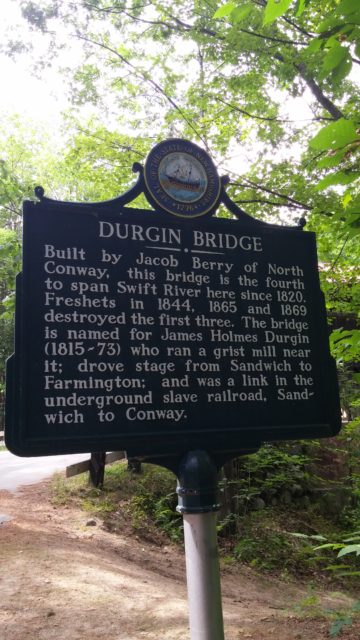
Historically, timber in New Hampshire was very inexpensive due to the levels of intense logging statewide. As a result, timber products were used for a wide variety of structures including bridges. It was, however, a well-known fact that a timber bridge left open to the elements would only last about 10-15 years before rotting and becoming unsafe. A simple solution to this problem was to cover the bridge and protect its structural integrity.
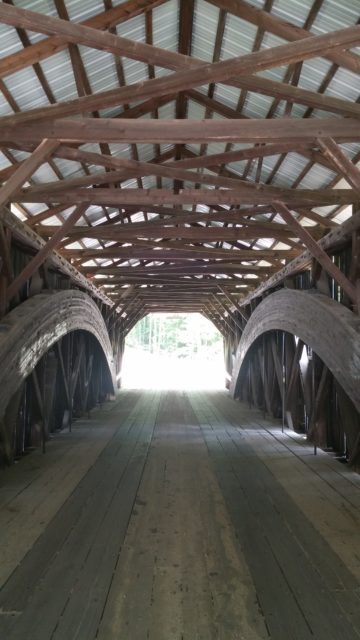
Covered bridges throughout the world come in a wide variety of shapes, sizes, and colors. In New Hampshire, however, bridges are commonly equipped with the Paddleford style truss. This style is named after Peter Paddleford of Littleton, New Hampshire.
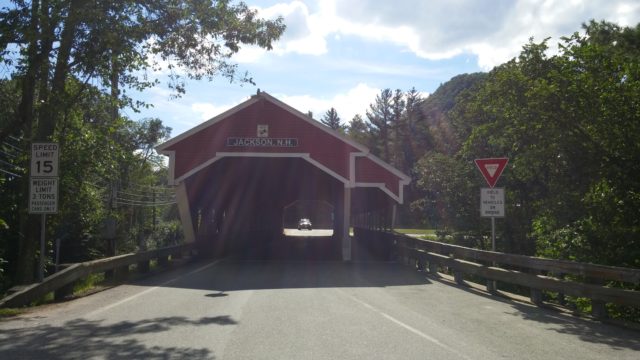
Many of the bridges that still stand in New Hampshire are easily accessible and located near major towns, like the Swift River Bridges in Plymouth and Conway. Each bridge seems to have its own personality and unique story which makes seeking them out a very fun hobby. If peak bagging is not a hobby that interests you or your family, then maybe you should give bridge bagging a try!
The following bridges are highly suggested and easily accessed:
Bridge Name: Sentinel Pine
Location: Flume Gorge
Date Built: 1939
Nearest State Park: Located in Franconia Notch State Park

Bridge Name: Blair
Location: Campton, NH
Date Built: 1869
Nearest State Parks: Franconia Notch and Wellington
Blair Covered Bridge in Campton
Bridge Name: Bump (aka Webber)
Location: Campton, NH
Date Built: 1972
Nearest State Parks: Franconia Notch and Wellington
Bump (AKA Webber) Covered Bridge in Campton
Bridge Name: Tannery Hill
Location: Gilford, NH
Date Built: 1995
Nearest State Parks: Ellacoya and Ahern
Tannery Hill Covered Bridge in Sandwich
Bridge Name: Durgin
Location: Sandwich, NH
Date Built: 1869
Nearest State Park: White Lake
Durgin Covered Bridge in Sandwich
Covered Bridge Fun Facts
- The Cornish-Windsor Covered Bridge that runs from New Hampshire to Vermont is the world’s longest 2-span covered bridge.
- Pennsylvania is home to not only the most covered bridges in the United States, but the first bridge in the United States as well (550’ Permanent Bridge in Philadelphia, 1805).
- During the height of the covered bridge era (1800s – 1950s) there were more than 10,000 covered bridges in the United States, 400 of which were in New Hampshire.
- There are two covered bridges in Switzerland that were built in the 1500s that are still standing today.
As we get ready to say goodbye to summer and hello to fall, make sure to include some of these covered bridges and fire towers in your schedule during fall foliage season for some truly stunning photographs!

